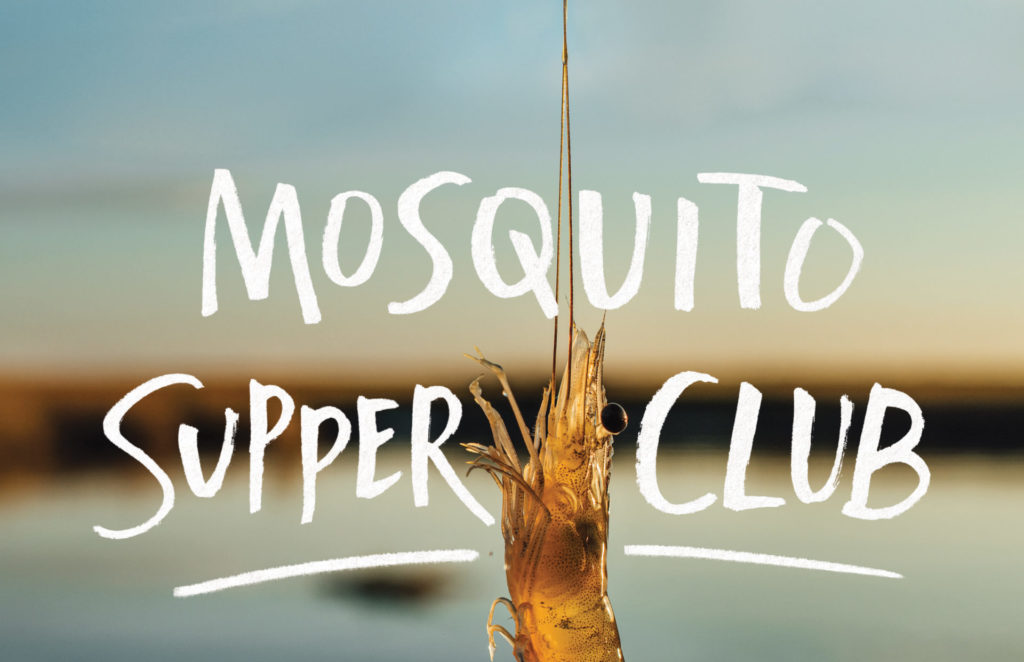During a time when travel restrictions prevent people from exploring culinary traditions, cookbook recipes offer gateways to unfamiliar ingredients and cooking styles. Mosquito Supper Club: Cajun Recipes from a Disappearing Bayou takes foodies on a journey to Southern Louisiana. Before Melissa Martin expanded her audience to cookbook purchasers, she shared local history and Cajun cooking with guests at her trendy Mosquito Supper Club. As I flipped through the cookbook’s pages, I gained a new understanding of southern cooking. I simultaneously created a shopping list and a selection of Cajun recipes to try.

Mosquito Supper Club Introduction
In the opening lines, Martin reminisces about her childhood days living along the Louisiana coast. As she fast forwards to the present, readers learn how rising water levels are causing land to disappear. Even if the water submerges areas where her ancestors once lived, this cookbook will preserve Martin’s Cajun traditions “It’s imperative that the small fishing villages that push out so much seafood tradition and culture be recognized and remembered before time and tides take their toll.” (Page 10)
The Introduction also describes multi-cultural aspects of the community’s heritage and Cajun history. At the heart of the bayou, life is the ebb and flow of the water and the seafood industry, which produces more seafood than any other state except Alaska. Despite the abundance of American seafood, Martin states that 80 percent of today’s seafood is imported. The preference for less expensive products has had a detrimental effect on Louisiana’s fish industry.
Napa Valley Influence
Hurricanes, floods, and storms are an integral part of Louisiana’s life. Hurricane Katrina created an opportunity for Martin to explore Napa Valley food culture and to learn from Michelin-star chef Kelly McCown and Sarah Walz.

After returning to Louisiana, Martin opened Satsuma Café. In 2014, she launched the Mosquito Supper Club. At this restaurant, Martin shares Cajun food from her childhood. “The supper club started very organically, and I had no idea how it would take shape. I knew I wanted a space where I could use food to tell stories and share images of Cajun life, illustrating the beauty of present-day Cajuns, and to capture what is real Cajun and what is contrived, what is true and what is ‘commercialized.'” (page 284) Family recipes made with local ingredients colored with a selection of stories are the cornerstone of the Mosquito Supper Club’s tasting experience.
Cajun cuisine originated with women residing in tiny villages preparing simple foods made with seasonal produce. Like other women in this area, Martin learned the basics from family members. Early on, she encourages the use of high-quality local ingredients, including freshly milled grains.
Mosquito Supper Club Chapters
The chapters are organized by food categories. With an abundance of seafood recipes to select, Martin separates shellfish (shrimp, crab, oysters, crawfish) into separate groupings and has a separate chapter for fish. Gumbo, Poultry/Meat/Rice, Salt Pork and Beans, Vegetables, Pantry and Sweets and Breads round out the other sections.
In each chapter, Martin includes Cajun cooking basics as well as ecological and historical perspectives regarding many of the food products. A glossary of terms is useful for anyone unfamiliar with the jargon. Denny Culbert’s enticing food photos encourage readers to look at the adjacent recipes. Step by step instructions with easy to follow illustrations take the guesswork out of unfamiliar cooking and eating techniques. Anyone uncertain of how to eat a crab, oysters on a half shell, or how to peel a crawfish will love the multi-step explanation with corresponding images.
Interspersed throughout the recipes are useful food buying recommendations and cooking tips. While I don’t care for oysters, I never knew that “the flavor of an oyster reflects the waters in which it grew.” Page 113) Foodies looking for a deeper understanding of this region’s cuisine will be fascinated by the plethora of background information.
Cajun Gumbo
Now I understand why Cajun restaurants usually promote one or more gumbo dishes. According to Martin, “gumbo is the tie that binds south Louisiana. It symbolizes family, a shared table, local ingredients, patience, and subtleties of culture and tradition.” (Page 165) The variety of gumbo options illustrates the diversity of local traditions. From shrimp to chicken to pork to duck, Martin offers a sampling of culinary customs.
Creole vs Cajun Cultures
Like many Northerners, I struggle with understanding the nuances of Southern culture. After reading Martin’s explanation of Creole and Cajun cultures, I can see why the distinction between these two groups is often unclear. “Cajun cuisine and Creole cuisine are real and distinct, even though the lines between them can be blurred.” (page 186) Martin outlines the history of the people who created the culinary traditions, along with a few notable features that attempt to differentiate the two cultures. “Creole food developed in and around the city of New Orleans, where cooks had access to many more ingredients than Cajuns did on the bayou. Cajuns weren’t entirely cut off from the city, but they made do with a lot less.” (Page 189)
Even though rice is not an indigenous product, it is a staple of local diets. “Louisiana is the third-largest producer of rice in the United States, behind California and Arkansas.” (Page 210) Other commonly used ingredients include okra and salt pork cooked with beans.
Tasty Sweet Treats
The Pantry section offers a sampling of a few sweet recipes—compotes and marmalades, along with pickled vegetables and chicken stock and sauces. Traditional Cajun desserts—lagniappe bread rolls, beignets, bread custard, and tarte a la bouille pie are just a few of the tasty treats in the Sweets and Breads chapter.
By the time I flipped to the last page, I was eager to start experimenting with Cajun cooking and baking.
Disclosure
I receive an electronic copy of Mosquito Supper Club: Cajun Recipes from a Disappearing Bayou.
BIO
When Sandy isn’t trekking or writing in Colorado, she is traveling. She has visited more than 40 countries and lived as an international teacher in Bangalore, India. Sandy’s award-winning book, May This Be the Best Year of Your Life, is a resource for people contemplating an ex-pat lifestyle and living outside their comfort zone.
Sandy’s lifestyle and travel experiences are frequently shared with international and domestic online sites and print media. She has contributed stories to Hemispheres, Destinations Magazine, KUHL’s Born in the Mountain blog, Grand Magazine, Wandering Educators, Golden Living, AARP, Hadassah magazine, Localliz, One Travel, Miles Away, Canadian Jewish News, Getting On Travel, Far and Wide, Colorado Parent, Traveler Confidential, Family Circle- Momster, and others.













Leave a Reply